Table 1. Summary of the Learning Outcomes of the Laboratory & Project Design II Course
All in-class teaching in the Republic of Trinidad and Tobago, West Indies was suspended on Friday, 13 March 2020, because of the COVID-19 global health crisis. These restrictions remained for the commencement of the new academic year 2020-2021, which began in September 2020, thus jeopardizing the delivery of course content at the University of the West Indies, St. Augustine campus using the traditional in-class methodology. This paper presents an effective methodology for teaching and assessing laboratory-intensive courses during COVID-19 school restrictions. A mandatory level-two laboratory course of the Department of Electrical and Computer Engineering at the UWI was utilized as the basis of this study, which aimed at demonstrating that the methodology prevented student performance from degrading below what was experienced in the past five academic years. Feedback questionnaires were also administered to students, highlighting the key benefits they gained.
Education at the tertiary level provides students with a crucial theoretical foundation along with the problemsolving skills needed to traverse existing issues in the industry. Every year, level-two undergraduate students of the Department of Electrical and Computer Engineering at the University of the West Indies, St. Augustine campus, are presented with a mandatory laboratory course based on the development of digital and analog electronics systems. In this course, the main feature is the development of digital electronic systems, while the analog electronic components are responsible for the conversion of any analog sensory signals to a digital format for processing on the digital component.
All students enter the course with knowledge from both an introductory level-one digital electronics course and an introductory level-one analog electronics course, both of which provide students with a great theoretical background in both areas but very limited practical experience.
Prior to 2015, all laboratory exercises and design project components of the level two laboratory course were conducted in the laboratory. During the years 2015–2019, the course lecturer decided to reduce the human resource and financial requirements of the course and increase the support available to students by conducting the laboratory exercises for this course in the classroom. The mode in which the design project was conducted for 2015–2019 remained unchanged.
On Thursday, 12th March 2020, significant teaching restrictions were introduced at the University of the West Indies, St. Augustine, because of COVID-19 in-class teaching was suspended. Up until the time of the preparation of content for this level two laboratory course, the teaching restrictions were still in place, a solution for conducting this laboratory-intensive course during COVID-19 teaching restrictions was required. Before such a solution can be discovered, it is important to review the literature on existing teaching approaches that can assist in paving the way forward (Coughlin, 2020; Vlasov, 2020; Pearson, 2013).
Zhao and Okamoto (2009) discussed the use of an adaptive framework aimed at engaging students in collaborative discussions of course content through ubiquitous environments. The methodology encouraged the utilization of mobile technology in the facilitation of email-based discussions of course content during the teaching period. It claimed that the use of the proposed methodology enhanced the students' learning experience and improved their performance in the area of study. The methodology provided opportunities for the remote delivery of course content to students. Mobile technology has become much more popular in recent times among college students, and as such, the possibilities for learning through ubiquitous environments are limitless (Xiao & Li, 2020; Jieru et al., 2020; Liu, 2020).
Lindsay et al. (2007) discussed the possible use of the Labshare resource kit, which provides academics with information, resources, and tools required for the provision of remote laboratories to support learning by engineering undergraduates. The Labshare toolkit includes instruments that allow users to evaluate the deployment, development, and learning attributes of remote lab setups. Each evaluation produces a series of questions that initiate the analysis of components that are likely to increase the likelihood of producing successful implementations of remote laboratory rigs. The Labshare toolkit also provides an additional 150 questions that enable users to construct their assessment tools. At the time of production, a series of share trials and evaluations on the effectiveness of Labshare for teaching were being carried out. After the completion of their learning exercise, students would have been required to complete an online survey, after which the teaching staff would summarize the student responses (Lindsay et al., 2011).
Demeter and Banský (2012) presented a virtual laboratory that could be utilized for blended and distant e-learning of topics related to electronics technology and the support of theoretical lectures. The rationale behind this lab was to provide remote access to lab resources for students, especially those with limited access to the lab facility, such as external students and students with disabilities. The approach used 360-degree panorama pictures derived from all labs in the department. Basic information about lab equipment, including the name and type of equipment and safety regulations, was included. Online and offline digital video were also included as part of the virtual lab. One key aspect of the virtual lab was that the lab equipment was connected to the student's computer through Ethernet communication. As such, the equipment must be communication-capable (Zhang, 2020; Dyubele et al., 2020). At the time of preparing this paper, the impact of the use of the virtual lab for student learning had not been verified, and no follow-up paper was found. As such, the merits of this methodology cannot be presented at this time.
Chatterji et al. (2013) presented a work-in-progress based on a new method and framework called uLab for accessing design laboratories by engineering students. The methodology uses Linux and FOSS to provide realtime designing and debugging services to students over a standard RDP channel. A secure inscription pluginbased remote lab framework allows students to customize programming and testing or debugging services to match the physical resources of the lab, ensuring scalability, ease of management, and security through the use of industry-standard technologies such as Kerberos and LDAP. uLab consists of three components, terminal services, infrastructure, and hardware-access workplaces. The uLab system is installed and verified as fully operational on computer systems. However, students in academic courses have not yet utilized it. Therefore, at the time of preparation of this paper, the impact of the use of uLab for student learning was not verified, and no follow-up paper was found. As such, the merits of this methodology cannot be presented at this time (Romero- Rodríguez et al., 2020; Ya et al., 2009).
Grout (2014) presented the use of assistive technologies in remote laboratories to support the learning of electrical and information engineering laboratory work by students with disabilities. The methodology considered the accessibility of students to real experiments that can be accessed remotely through the Internet. As such, it has made traditional laboratories accessible through a web server using software and given disabled students the ability to control all aspects of the experiment from the comfort of their personal computer or laptop. The traditional approach requires the laboratory circuit to be set up on a breadboard and connected to a digital multimeter and power supply, which are connected to a personal computer using either RS-232 or USB. To cater to disabled students, assistive technology such as speech recognition software Nuance (n.d.), which converts voice to text, or screen reading software Freedom Scientific (n.d.), which converts text into voice, is utilized to allow for the remote access of disabled students to the laboratory equipment. Experiments are based on a web server, which receives commands from the student and utilizes these commands in setting up output voltages, while a digital multimeter is connected across the circuit's output resistor. The disabled student can view experimental results through webcam or raw text data. The methodology appears to have merit. However, no information on the actual implementation of the methodology in the teaching of a course was provided. There was no evidence of its effectiveness in helping disabled students learn. One merit of the approach is that it allows disabled students to remotely access equipment and progress with laboratory work. A drawback of the approach is that if students have limited or no access to an internet connection, they would not be able to conduct the remote experiment (Peng et al., 2020; Feng et al., 2020).
Roy et al. (2015) used a web-based virtual lab called COLDVL to teach logic design and computer organization to undergraduates. The COLDVL virtual lab contains a hierarchical module-level tool that includes a logic simulation component along with a wide variety of technical features. COLDVL also includes a graphical user interface that can be used in the development and simulation of logic circuits. However, the methodology did not verify whether utilizing COLDVL in teaching actually enhanced students learning of logic circuits. The use of this approach promotes self-study among students and provides opportunities for the expansion of teaching topics in any discipline, provided the appropriate software is used (Lustigova & Lustig, 2009; Goldberg, 2020; Maiti & Mahata, 2012).
George (2018) presented a classroom-based methodology for teaching digital logic design to undergraduates in the Department of Electrical and Computer Engineering at the University of the West Indies (UWI), St. Augustine campus. In the classroom-based methodology, all laboratory-linked activities were carried out inside the classroom instead of the laboratory environment. The effectiveness of the methodology was evaluated and verified by comparing student performance in both the laboratory exercises and capstone project under both this classroom-based methodology and the previous lab-based methodology. The student's performance was better when the classroom-based approach was utilized than when the traditional laboratory approach was utilized. A feedback questionnaire was also administered for both classroombased and traditional teaching methodologies. Based on the feedback questionnaire, students endorsed the classroom-based methodology for learning digital logic design.
One merit of the classroom-based methodology is that all laboratory work that was traditionally done in a laboratory environment is now carried out entirely in the classroom under the guidance of the course lecturer. As such, the lecturer has the opportunity to blend both theoretical work and practical experiences in the same classroom setting. Furthermore, this classroom-based methodology can be easily moved online through online presentation tools such as Zoom and Blackboard Collaborate once students have access to the required toolkits for the laboratory exercises. This ability to adapt easily to online teaching makes classroom-based methodology a viable approach in the event of pandemics. The classroombased methodology benefits courses with practical components, whereas a course such as History may not benefit suitably from the methodology (Khattar et al., 2020; Won et al., 2020).
Chen et al. (2020) proposed and implemented a blended online teaching methodology based on live broadcasting and Massive Open Online Courses (MOOCs). The approach was designed to be consistent with the requirement of suspending classes without suspending learning, where students are required to adjust their learning methodologies and continue their studies through the internet. The methodology assessed the characteristics of the courses to be taught, along with the current learning situation, before making necessary adjustments to ensure that the online teaching methodology was as homogeneous and equivalent as possible to the traditional approach. Therefore, online live broadcasting was set as the primary teaching tool, while MOOCs were considered an auxiliary approach. "Tencent Classroom" was utilized as the live broadcasting platform, while ZJOOC was used as the MOOC platform. Supplementar y resources such as PowerPoint courseware, micro-course videos, and electronic teaching materials were made available for students' use during the class (Kebritchi et al., 2017).
The teaching methodology focused on three components, which were pre-class learning, in-class learning, and after-class learning. The pre-class learning phase promoted students' exploratory and independent learning. Thus, the teacher recorded micro-course videos and made them available to students for review before the class. Students perform group work and give feedback on any difficulties in their learning process. The in-class teaching phase focused on real-time interaction through bidirectional communication between students and teachers. The live broadcasting tool "Tencent Classroom" allowed students to interact with each other and respond to questions. The after-class consolidating phase consisted of compensatory teaching using the ZJOOC platform. In this phase, homework assignments were assigned to students along with homework correction, and associated question and answer facilities were made available (Lowe et al., 2009).
The methodology administered a questionnaire survey based on the proposed methodology to 239 students and 3 teachers. The methodology claimed that the satisfaction percentage was 92.15% based on the questionnaire survey. 192 students indicated that they frequently contacted teachers through the platforms used, while three teachers indicated that the use of such platforms made them more connected to the student body. A significant advantage of the approach outlined is that it provides a relatively convenient environment to promote student learning of the material, which allows a fair opportunity for continuous teacher-student interaction. However, a drawback of the approach is that it cannot guarantee student engagement in online teaching. If students do not access the online facility, they will not be able to benefit from the merits of this methodology.
Ocaña et al. (2020) presented the teaching support of 137 students, aged 10 to 12, using a learning companion named Alcody. The methodology indicated that learning companions could be considered subtypes of Pedagogic Conversational Agents (PCAs), which are generally computer programs that personify or represent teachers through the use of multimedia learning environments (Johnson et al., 2000). The learning companion adopts a human form and speaks directly to students. Alcody is online-based, available in Spanish, and based on constructionism, as it requests students to construct a program. The methodology indicated that the use of Alcody for student learning resulted in a significant increase in students' learning scores in pre-tests on input or output programs, from an average score of 0.88 to 7.56. The methodology also indicated that the satisfaction percentage of the entire group of 137 was 95%.
A major merit of the use of learning companions outlined is that it gave students the opportunity to focus on the development of the course, including questions to be assigned to the learning companion for student learning, allowing teachers to focus more on the management of the course while the learning companion facilitates the teaching aspect. However, a main limitation of the approach is that the learning companion, Alcody, is available only in Spanish. Students who speak other languages must have some form of translation facility to be able to use Alcody, otherwise another learning companion must be selected. A main limitation of the analysis is that performance information from a controlled group that had not utilized Alcody was not included. Therefore, it was not possible to accurately gauge the effects of not using Alcody on student learning.
George (2020a) evaluated the effect of using three types of consultation, office, email, and tutorial, in teaching Finite State Machines (FSMs) to engineering undergraduates at the University of the West Indies (UWI), St. Augustine campus. At the end of the research, it was concluded that students who made use of consultation opportunities performed better in quizzes and design projects based on FSMs, while students who did not make use of consultation opportunities were more likely to fail. The provision of office, email, and tutorial consultation opportunities allowed educators to satisfy the varying needs of students at UWI. However, a drawback of such consultation activities is that office and tutorial consultation opportunities, in their current state, would not be feasible for supporting student learning during a global health crisis, as both require the use of either an office or a classroom space.
George (2020b) detailed effective teaching and examination strategies that can be enforced for undergraduate learning of courses during COVID-19 school restrictions. The introductory Digital Electronics course of the Department of Electrical and Computer Engineering at UWI's St. Augustine campus was utilized as the basis of this study. The methodology focused on promoting student learning through instruction rather than simply moving teaching to online platforms in light of COVID-19 school restrictions. As such, a series of learning opportunities were provided, and students were given the flexibility to select the opportunities that best assisted them in learning the course content. The strategies included the use of My e-Learning as the online teaching platform along with learning tools such as the Port- Mapping Tool for Digital Logic Design, visual tutors, and online mock quizzes, among other things (George & Bissoon, 2019). The methodology indicated that the use of the teaching and examination strategies prevented student performance during COVID-19 school restrictions from falling below what had been experienced in previous academic years of teaching the course. A merit of the strategies is that they allow students the opportunity to learn remotely through instruction using a variety of online facilities. The approach, however, best suits courses with small practical components, as courses with larger amounts of practical work may be less suitably facilitated using the teaching strategies (Siriwardhana et al., 2020; May et al., 2013).
With the anticipation that COVID-19 school restrictions in Trinidad and Tobago would be in place indefinitely, it was deemed important to review the traditional approach of delivering the level-two laboratory and project design course to assess the feasibility of all aspects of the traditional delivery plan. The merits and drawbacks of all the existing literature reviewed above would then be assessed and used as a guide in constructing the course management strategy. Student performance will be assessed to determine if the approach utilized avoids degradation below what was experienced in the past five academic years. Student satisfaction with the delivery strategy will also be obtained through a feedback questionnaire and assessed. It is expected that the work done in this paper will provide a blueprint for the effective administration of lab-intensive courses for students.
The level two laboratory course entitled Laboratory and Project Design II (ECNG 2004) provided students with an opportunity to acquire practical experience in the development of digital and analog electronics, along with their application to solving real-world problems.
The previous teaching methodology for the level two laboratory course (ECNG 2004) was used over a 5-year period from the academic year 2015–2016 to 2019–2020. As this was a level-two laboratory course, students were expected to have prior knowledge from both an introductory level one digital electronics course and an introductory level one analog electronics course. Table 1 shows the learning outcomes of the level two laboratory course.
The course required 3 hours of contact for course delivery per week for 12 weeks, for 36 contact hours. This 3-hour allocation per week was meant to support lecture, laboratory, and question-and-answer activities for the semester. The course was assessed through three digital electronic labs (35% of the course weighting), two printed circuit board labs (15% of the course weighting), and one design project (50% of the course weighting), which consisted of two deliverables, a formal report and a practical examination. Table 2 shows the assessment artifacts for the course.
The semester consisted of 36 contact hours with students, including 12 hours of pure class lectures, 15 hours allocated to delivering pure laboratory exercises, and 9 hours allocated to question & answer sessions to support students' design project attempts. For the digital electronics labs, students were required to purchase the Coolrunner-II Pro toolkit, and the laboratory manual was necessary for pursuing the required laboratory work (Xilinx, 2008). All digital electronics labs were conducted using the classroom-based approach. After the laboratory exercise, if students faced any issues, the course lecturer was usually available to address them using the approach. For the printed circuit board labs, students typically made use of the laboratory facilities to become familiar with the required tools (George, 2019).
Prior to COVID-19 school restrictions, students enrolled in the Laboratory and Project Design II course were required to attempt a design project entitled "Design and Construction of a Digital Frequency Meter System". The project consisted of a basic system that must be upgraded on both the digital electronics and analog electronics side. In the academic year 2020-2021, during the continuation of COVID-19 school restrictions, the course lecturer made a decision not to make any modifications to the existing design project description. However, adjustments may need to be made in the way the project is delivered and assessed.
The Digital Frequency Meter System must utilize Pulse Counting and be capable of measuring the frequency of input square waveforms originating from the selected programmable logic device for the range 0 Hz - 10 kHz, with a resolution of 1 Hz (Digilent, 2020).
Design and Construction of a Digital Frequency Meter System using Programmable Logic Devices.
The frequency of the input signal must be displayed on the 7-segment displays of the selected programmable logic device and must fulfill the upgrade requirements.
These upgrade exercises do not require physical implementation. All development aspects prior to physical implementation are required.
Before implementing the new teaching methodology, the course lecturer ensured that students were wellequipped to undertake the online version of the labintensive laboratory and project design course. One major aspect of preparation was ensuring adequate student access to software and hardware for the online version of the course. The course lecturer gave great consideration to the financial status of students who were required to undertake the course while selecting software and hardware resources that were either free or affordable. Moving from the laboratory to online required students to have direct access to these resources, and the success of the delivery plan ultimately depended on students' ability to access these resources on a daily basis. The preparation for the course extended beyond software and hardware resources, and it was crucial to identify these aspects. Preparatory steps were taken before the commencement of the course delivery.
This laboratory course required students to implement digital electronic circuits for both labs and the design project. Traditionally, students would use the computers in the department's electronics lab to conduct this laboratory work. Due to COVID-19 restrictions, the laboratory facility was unavailable to students for this purpose. Therefore, they had to conduct all laboratory exercises online under the guidance of the course lecturer. Students were also required to practice laboratory exercises and undertake the 50% design project at home without supervision but with consultation with course staff. As such, it was important for the course administrators to make adequate software resources available to students for the development of the required digital electronics circuits. The Xilinx ISE Webpack equipped with the ISim simulator was selected for this purpose, especially because it is a popular development platform for digital systems. It was also free to download and install, and versions were available for all versions of Windows and Mac operating systems. A procedure for downloading and installing the software was prepared and made available to students to assist them in installing the software on their computers at home. Having succeeded with this step, students would have unlimited access to Xilinx ISE for circuit development despite COVID-19 restrictions.
This laboratory course required students to download bitstreams for Xilinx-implemented circuits to a physical platform. They were then required to perform on-board testing and demonstrations with that physical platform. Traditionally, students would make use of toolkits made available to them by the department's electronics laboratory. However, due to COVID-19 restrictions, the laboratory facility was unavailable to students for this purpose. Therefore, it was important for the course administrators to make adequate hardware resources available to students for the on-board testing and demonstration of the required digital electronics circuits. The Digilent CoolRunner-II Pro starter board was selected to remedy this deficiency, especially because of its affordability and the fact that it contained sufficient resources to support all teaching and learning activities for the digital component of the course. The Digilent CoolRunner-II Pro starter board contains an abundance of resources, including 256 macrocells, 144 I/O pins, 7- segment displays that can be illuminated for display purposes, push buttons, switches, and LEDs, among other things. These resources met the requirements of the laboratory course. On average, the starter board, along with the USB to mini-B cable for programming and powering the boards, cost 49 USD. The Department of Electrical and Computer Engineering bulk-purchased 100 of these starter boards, cables, and retailed them to students of the course. Students were required to make payments online and collect the resources on campus at a prescribed location at a scheduled time. Alternatively, students could have had the resources delivered directly to their homes using fast courier delivery, as long as they were willing to cover the 5 USD delivery cost or the 40 USD delivery cost for students stationed outside Trinidad and Tobago, thereby avoiding leaving home and risking exposure to the spread of COVID-19. Students were also encouraged to purchase the starter boards and cables themselves if they had access to credit cards. Having succeeded with this step, students would be able to download their bitstreams and perform on-board testing and demos of their systems despite COVID-19 restrictions.
This laboratory course required students to develop and simulate analog protection circuits and prepare artwork for PCBs. Traditionally, students would make use of the computers in the department's computer simulation lab to conduct this particular laboratory work. However, due to COVID-19 restrictions, the laboratory facility was unavailable to students for this purpose. As a result, students would have to conduct all laboratory exercises online under the guidance of the course lecturer.
Therefore, it was important for the course administrators to make adequate software resources available to students for the development of the required analog protection circuits. While Multisim 11 and Ultiboard 11 were available for download, an entry key was required to access them. To address this, the department secured keys for 100 students at no cost to them. Students were then required to download Multisim 11 and Ultiboard 11 and enter the product keys. Having succeeded with this step, students would have unlimited access to Multisim 11 and Ultiboard 11, enabling them to develop and simulate analog protection circuits and prepare artwork for PCBs despite COVID-19 restrictions.
Online submission of post-lab and design project reports was a major requirement of the online delivery of this laboratory course. To ensure that the marking of these reports is efficient and occurs in the shortest time possible to facilitate timely feedback for students, it is crucial to allocate adequate human resources for the marking of all assessment artifacts. If it is possible to mark a printed 20-page report in 20 minutes, then it may be wise to expect that marking the same 20-page report online may require more time. As such, the amount of human resources may have to be increased for online report marking. Sometimes, individuals may be able to mark reports online at a faster rate than they would for a printed report.
Because this was the first time a lab-intensive course such as this was conducted fully online at the UWI, the demand for human resources for marking was closely monitored to guarantee that completion timelines would be met and also to ensure consistency in the marking process. Another major consideration made for this laboratory project design course was that excess marking resources be allocated in the earlier weeks of the semester. As the semester progressed and course administrators had a better gauge of the marking requirements, the human resource allocation was optimized.
The need for detailed marking rubrics is crucial when conducting a lab-intensive course. The detailed marking rubrics for all lab exercises and projects in the course were developed prior to the commencement of the semester.
This was important to ensure the consistency of marking by all members of the marking team. It reduced the demand on the course administrators to clarify and discuss how markers should address student responses that may be borderline in terms of correctness and feasibility. Even when many varying student responses to the same questions were provided, these detailed marking rubrics adequately supported the marking operation.
The class enrollment for the laboratory course for the academic year 2020–2021 was 78 students. The laboratory course presented in the academic year 2020–2021 consisted of the same learning outcomes as the previous offerings from the years 2015–2016 to 2019–2020. Unlike previous years, the offering for the academic year 2020–2021 was delivered during a global health crisis where school restrictions were in place. On Friday, 13th March 2020, COVID-19 school restrictions were imposed in Trinidad and Tobago. In-class teaching was stopped, and all teaching had to be conducted online for all academic institutions. This ultimately complicated the effective delivery of course content to students for all courses, especially laboratory-intensive courses. As such, the traditional teaching strategy for the level-two laboratory course had to be modified to promote effective delivery to students during a global health crisis.
The My Elearning online platform was built based on Moodle and has been used by the University of the West Indies, St. Augustine, over the years as a repository where students can access all course materials, such as class notes, lab manuals, etc. During the COVID-19 school restrictions, the My Elearning platform became very important for the online support of students. This platform was of significant importance to the laboratory and project design course (ECNG 2004) for lecture support, lab support, and even assessment purposes. The My Elearning platform sat at the center of the delivery and assessment strategy for this course, and the upcoming sections will demonstrate how closely tied the platform was to all aspects of course delivery and assessment strategy.
Blackboard Collaborate (BBC), which was available on the My Elearning course shell, was utilized for the online delivery of course material for the course. The course lecturer was required to schedule course lectures on the BBC, and students were then able to enter the BBC lecture room and be taught course material by the lecturer. BBC was very useful as it allowed the lecturer not only to share applications on the computer but also to allow students to share applications on their computer in such a way as to get clarification on attempts made in homework questions. The lecturer was also able to share video to demonstrate experimental demonstrations or on-board testing of digital circuits developed. Laboratory exercises were conducted online with the BBC, using the classroombased teaching approach as a guide (George, 2018).
One major issue that existed with the use of BBC was that all course lecturers at UWI were required to use it for the teaching of their course material. At the same time, all students would have been logging in on BBC for lectures, resulting in the crashing of BBC on many occasions during the earlier parts of the semester. As such, the course lecturer decided to utilize Zoom's video conferencing facility as a backup platform for the delivery of course material. Figure 1 shows the homepage of Blackboard Collaborate. Figure 2 shows the screen share feature of Blackboard Collaborate. Figure 3 shows the PowerPoint presentation using Blackboard Collaborate. Figure 4 shows the camera view on Blackboard Collaborate.

Figure 1. Homepage of Blackboard Collaborate (BBC)

Figure 2. Share Screen Feature of Blackboard Collaborate (BBC)

Figure 3. PowerPoint Presentation Using Blackboard Collaborate (BBC)

Figure 4. Camera View on Blackboard Collaborate (BBC)
The course lecturer in the laboratory utilized Zoom, a video conferencing platform, as a backup facility for delivering course lectures and laboratory exercises. This decision was made because it was anticipated that the use of Blackboard Collaborate by both staff and students across the campus would be very high, which could possibly lead to downtime for the facility. Therefore, having a backup platform was deemed necessary. This was particularly important during the earlier half of the semester, when the My Elearning platform crashed several times. Using Zoom, the lecturer was able to continue delivering material to the students without any interruptions. The Zoom Pro package should be obtained, allowing for lectures up to 24 hours in duration without interruption with up to 100 students, since the free basic package only allows a maximum of 40 minutes for each lecture. Other backup facilities include YouTube Live, Microsoft Teams, and Google Plus. Figure 5 shows the homepage of the Zoom application. Figure 6 shows the PowerPoint presentation through Zoom. Figure 7 shows the XILINX ISE demonstration through Zoom. Figure 8 shows the ISIM Simulation demo through Zoom.

Figure 5. Homepage of the Zoom Application

Figure 6. PowerPoint Presentation through Zoom

Figure 7. XILINX ISE Demonstration through Zoom

Figure 8. ISIM Simulation Demo through Zoom
In the traditional teaching strategy utilized prior to the COVID-19 school restrictions, students were required to attend lectures in the classroom, and no recordings were made or published for student use. As such, students would need to arrange office consultations with the course lecturer to better understand the material taught or anything missed in the classroom (George, 2020b). A crucial component of the teaching methodology utilized in the laboratory and project design course during the COVID-19 restrictions was the availability of all recordings for lectures and laboratory exercises delivered through BBC and Zoom. This was useful for students who may not have fully grasped aspects of the course material delivered live and wanted to rerun lectures to better understand what was taught. This feature was also useful in the event a student was unable to attend class due to reasons such as poor internet connectivity and power outages, among other things.
The port-mapping tool for digital logic design resulted from a final-year project supervised by the course lecturer (George & Bissoon, 2019). The laboratory and project design course required students to apply their knowledge of port-mapping to the development of complex digital systems. Without the ability to do so, students would not be able to complete any deliverables for both the digital component of the course and the design project component of the course. Port-mapping was addressed extensively in the course lectures. However, to further support students in practicing port-mapping during selfstudy, the course lecturer made the port-mapping tool for digital logic design available for student download from the My Elearning course page. With these resources, students were able to build datapath block diagrams for their systems and use the step-by-step learning feature to arrive at the completed VHDL code for port-mapping any digital electronics system. Figure 9 shows the user interface of the port-mapping tool for digital logic design.
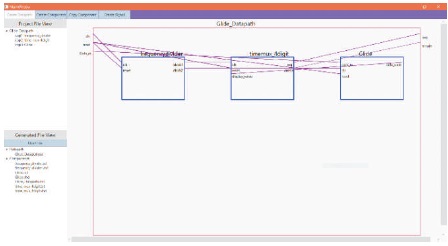
Figure 9. User Interface of the Port-Mapping Tool for Digital Logic Design
E-mail-based consultation involves the course lecturer facilitating correspondence with students on course tutorials, supplementary sheets, or lecture material through electronic mail (George, 2020a). This laboratory and project design course was assessed through 100% coursework, and students were required not only to attend course lectures and online labs but also to perform a great deal of practical work on their own. After each class, the course lecturer presented students with challenge questions, and students were required to attempt those questions on their own time, then scan their attempts and email them to the course lecturer, who would review and give feedback. After the review, the course lecturer presented students with a summary of all feedback, including alternative solution ideas to their attempts, through email. Any students who began an attempt but were unable to progress sufficiently or even complete it would find the lecturer's feedback useful and be given the opportunity to make another attempt, which would be the focus of a second email consultation. Email consultations were very useful in this course, especially because of the fully online nature of the course delivery, where office consultations were not possible.
Students requiring clarification on aspects of the course traditionally utilized office consultations prior to COVID-19 school restrictions. During the first semester of COVID-19 school restrictions, students made use of email consultations with the course lecturer. This consultation type remained the same for semester 1, 2020–2021, with this laboratory and project design course. However, because of the practical nature of the laboratory and project design courses, it was necessary to introduce a new type of consultation called Zoom Consultations.
During a Zoom consultation, a student was allowed to make inquiries on any aspect of the course in which they needed assistance, and the course lecturer would use the necessary tools, such as Xilinx ISE and Microsoft Paint, to discuss and demonstrate the material to the students. If a student was having issues debugging VHDL code, then the course lecturer enabled the share-screen feature on Zoom to allow the student to share their computer screen, hence allowing the lecturer to view the issues from the student's perspective before advising on how to resolve them.
Students requiring Zoom consultations were required to book one by email to the course lecturer and specify their name and the required timeslot for the consultation. The course lecturer would then verify that the required timeslot was available and create the Zoom meeting through the Zoom application. After that, the Zoom consultation link would be emailed to the student for them to log in prior to the consultation. During the first semester of the academic year 2020-2021, while the laboratory and project design course was being delivered, Zoom consultations were utilized by approximately 43% of the students enrolled in the course. It was also realized that 89% of the students who utilized Zoom consultations with the course lecturer repeated the use of Zoom consultations more than once.
The laboratory and project design course offered in semester 1, 2020-2021, consisted of several assessment artefacts, three of which were strongly connected to the design project component, and two were design project components. Marking rubrics were prepared for all course assessment artefacts, especially those that were linked to the design project. These rubrics were made available to students enrolled in the course at the beginning of the semester. The course lecturer dedicated specific time slots in the course schedule for discussing the rubrics of the assessment artefacts to ensure that no aspect of each rubric was ambiguous and to reduce the need for Zoom consultations by students to clarify aspects of the rubric. These sessions were conducted online using either BBC or Zoom, and in all cases, they were recorded and the recordings were made available to students if they wished to have a rerun. It was expected that these sessions would result in the improvement of students' attempts of all laboratory exercises and the design project components because it would be clear to all students what is required for all artefacts.
Unlike the COVID-19 teaching strategy, where students had the flexibility to choose the teaching elements that best assisted them in learning the course material, the teaching approach of this paper did not offer students much choice. The only elements that students had a choice to access were the use of course recordings, email consultations, and Zoom consultations. Every other aspect was mandatory. Nevertheless, it was expected that the combined utilization of available resources would benefit student learning of the material, despite the existence of COVID-19 restrictions, and assist students more than just transitioning from the classroom to using online lecture resources such as BBC and Zoom. It was also expected that this would improve the possibility of students performing well in the course.
During the beginning of the laboratory and project design course in semester 1, 2020–2021, COVID-19 school restrictions were in place in Trinidad and Tobago. Consequently, an alternative approach to administering and assessing all aspects of the course had to be utilized. The course lecturer made the decision to use the My Elearning platform to facilitate the assessment of all aspects of the course. There were specific methodologies involved in the assessment of students for the laboratory and project design course.
The entire assessment scheme for the laboratory and project design course was reviewed and modified to determine if all components of the course could be assessed as they had been in past years in light of COVID-19 restrictions. The digital electronics and printed circuit board components of the course did not require any adjustments to the way they were assessed. However, the assessment of the design project component had to be modified.
Traditionally, students were assessed for the design project through a formal report accounting for 30% of the course and a practical examination accounting for 20% of the course. Students were required to satisfy the requirements of a detailed report rubric made available by the course lecturer. For the practical exam, students were split into four groups, with each group confined to a 90-minute timeslot to facilitate their practical exam. Students in each group conducted the practical exam together, and a student-to-examiner ratio of 4-to-1 was utilized. Each examiner was responsible for examining four students within the 90-minute timeslot. Hence a group of 20 students required five examiners to ensure that students had ample time to conduct their examinations. In the practical examination, students were required to demonstrate in front of an examiner that their system met the design project requirements while the examiner occasionally asked questions to evaluate the students' understanding of the project requirements and design methodology.
For the academic year 2020-2021, the lecturer for the Laboratory and Project Design course had to take into consideration the COVID-19 school restrictions, which prevented students from attending campus for lectures, labs, and examinations. As a result, the traditional practical examination could not be conducted. One alternative was to assess students through an online practical examination, but this would require setting up individual examinations for every student to ensure the same level of individual examination as in the traditional approach. This would require a significant amount of human resources to ensure its effectiveness. In the end, the lecturer decided to replace the practical exam with a video demonstration by students, and a demo rubric was made available to all students to prepare for the demo.
The first assessment for the course was DIGLAB 1, which focused on the design and implementation of frequency dividers. This assessment was usually conducted through a 60-minute online open-book multiple-choice quiz on the My ELearning platform. As the quiz was already conducted online, the COVID-19 school restrictions did not affect its administration during the 2020-2021 academic year. A question bank of 100 different multiplechoice questions on the topic of frequency division was created and placed on the My ELearning course shell. The quiz was open for 24 hours, during which each student had 60 minutes to attempt 20 randomly selected questions from the bank. This method of assigning and shuffling questions minimized the possibility of collusion among students. At the end of the quiz period, all attempts were automatically graded by the My Elearning facility, and students received their grades. Figures 10 and 11 show examples of multiple-choice questions from quiz 1 on the My Elearning platform.
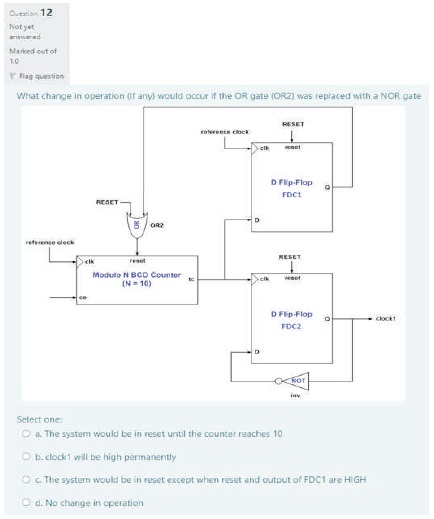
Figure 10. Multiple-Choice My Elearning Based Question for Quiz 1 (Circuit Based)
The next two course assessments, DIGLAB 2 and DIGLAB 3, focused on the design and implementation of a display system using 7-segment displays and the design and implementation of a Modulo 60 counter, respectively. These labs were normally assessed through post-lab submissions. The COVID-19 teaching restriction did not affect the way the post-labs would be facilitated, but it did affect the way they would be submitted. Prior to COVID-19 restrictions, the post-lab submission was printed on paper, and all reports were to be submitted to the designated laboratory technician. In the academic year 2020–2021, students were required to make all submissions through submission links set up on the My Elearning course shell. The post-labs consisted of design-type questions that allowed students to demonstrate their understanding of key aspects of the design project. A marking rubric was also created for all post-lab reports to ensure consistent marking by report markers of all student post-lab reports. All post-lab submissions were to be accompanied by a signed plagiarism form, and it should be noted that the submission link was a Turnitin-type submission link, which meant that all reports were checked for plagiarism, and students found guilty of plagiarism would have been assigned 0% for the post-lab exercise. Students were also advised to follow a stated naming convention for their files to assist with the report-marking process. The same approach was utilized for printed circuit board labs, which normally required paper-based submissions prior to COVID-19 restrictions but utilized online submission on My Elearning for the academic year 2020–2021. Figure 12 shows the My Elearning submission links for DIGLAB 1 and DIGLAB 2 post-labs. Figure 13 shows a sample post-lab question for DIGLAB 2. Figure 14 shows the detailed marking rubric.

Figure 11. Multiple-Choice My Elearning Based Question for Quiz 1 (Code Based)
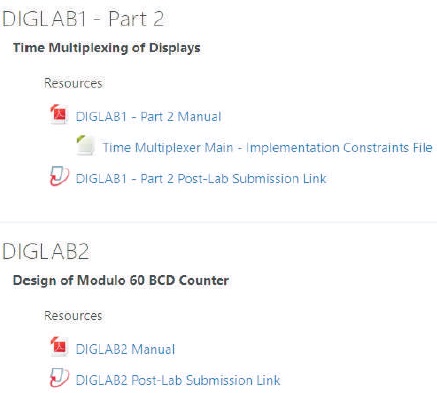
Figure 12. My Elearning Submission Links for DIGLAB 1 and DIGLAB 2 Post-Labs
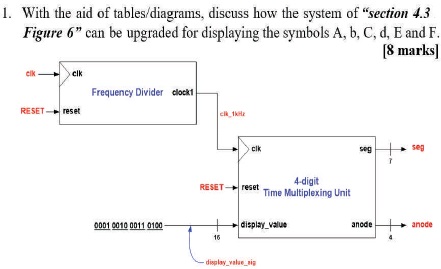
Figure 13. A Sample Post-Lab Question for DIGLAB 2
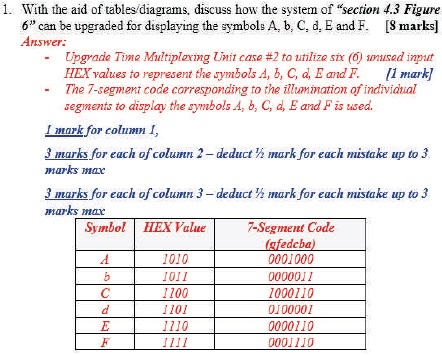
Figure 14. Marking Rubric for Sample DIGLAB 2 Postlab Question
The design project report, which required paper-based report submission prior to the emergence of COVID-19, now requires online submission through the My Elearning course shell for the academic year 2020–2021. Figure 15 shows the submission links for the design project components.

Figure 15. Submission Links for the Design Project Components
It must be noted that because this particular design project was utilized in previous academic years, there was a possibility that samples of past students' reports would have been available for students in this academic year 2020–2021, which could have resulted in plagiarism. To minimize this, the marking rubric for this year's design project report was modified with twice as many report requirements as previous years, and there was no change in weighting for the report component. In the academic year 2020–2021, students were required to conduct a literature review and include it as part of their report. In previous years, the report, which accounted for 30%, was graded out of 90. The course lecturer challenged students to perform better than previous cohorts, despite the significantly increased number of report requirements. This was because the report now accounted for 30% of the grade and was marked out of 180, reflecting the heightened expectations.
Prior to COVID-19 restrictions, students were required to sit a 90-minute practical exam to demonstrate their attempt at the deliverables of the design project and respond to examiner questions. However, due to the restrictions in the 2020–2021 academic year, students were not allowed to enter campus for lectures, labs, and exams. Therefore, a scheduled practical examination on campus could not be facilitated. An online practical examination would have taken a significant amount of time to facilitate the individual examination of each student. As a result, students were required to provide a full demonstration of their system based on a clear rubric provided by the course lecturer for the academic year 2020–2021. They were required to upload a video of the demo to the submission link provided on the My Elearning course shell. However, if a student's demo video exceeded 20 MB, they were required to make it available through YouTube for review by the course lecturer. As the demo videos of all students enrolled in this laboratory and project design course exceeded 40 MB, they all had to make their demo videos available through YouTube.
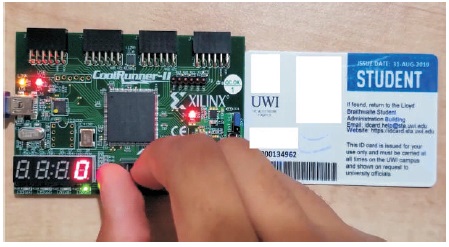
Figure 16. Sample Frame from the Demo Presentation of Student 1
To avoid plagiarism, students were required to show themselves in the demo video alongside the functional system. They were also required to begin their demo with an introductory statement and show their face and student ID while doing so. Students made full use of their camera to demonstrate the functionality of their systems. They used a screen-share feature along with the camera to demonstrate how they utilized Xilinx ISE to achieve the system functionality. Figure 16 shows a sample frame from the demo presentation of student 1. Figure 17 shows a sample frame from the demo presentation of student 2. Figure 18 shows a sample frame from the demo presentation of student 3. Figure 19 shows a sample frame from the demo presentation of student 4. Figure 20 shows a sample frame from the demo presentation of student 5.
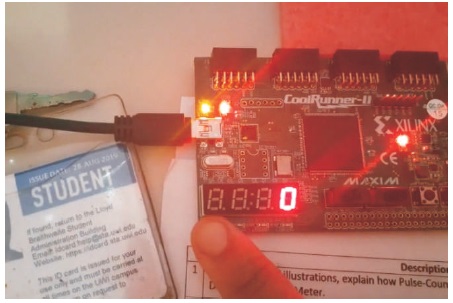
Figure 17. Sample Frame from the Demo Presentation of Student 2

Figure 18. Sample Frame from the Demo Presentation of Student 3
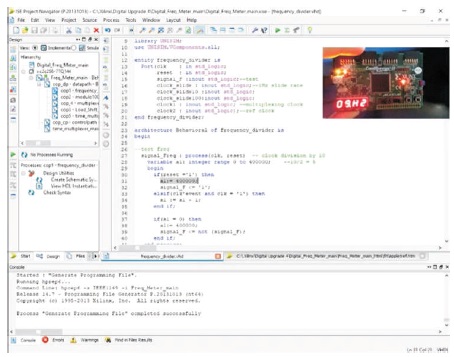
Figure 19. Sample Frame from the Demo Presentation of Student 4
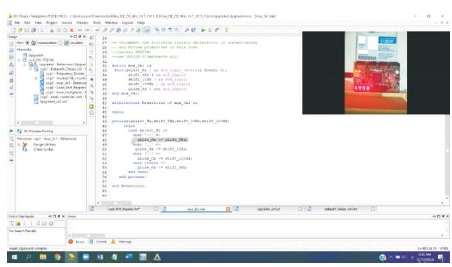
Figure 20. Sample Frame from the Demo Presentation of Student 5
After analyzing the data, it was observed that student performance in all digital electronics labs gradually improved on a yearly basis, with the best performance being in the academic year 2020–2021, despite the presence of COVID-19 school restrictions. The number of students failing digital electronics labs also gradually decreased on a yearly basis and was at its lowest during the academic year 2020–2021. However, student performance in the printed circuit board labs in the academic year 2020–2021 was consistent with that of the previous years.
Furthermore, student performance in the design project component improved in the academic year 2020–2021. Although student performance in the report component of the design project was generally satisfactory in previous years, in the academic year 2020-2021, despite COVID- 19 school restrictions, there was a significant improvement. Approximately 75% of students passed the report component of the design project in academic year 2020-2021, which was a significant improvement compared to the previous four years where the pass rate in the report component was approximately 50% for all four years. Table 3 shows the comparison of student performance in DIGLAB 1 over a 5-year period. Table 4 shows the comparison of student performance in DIGLAB 2 over a 5-year period. Table 5 shows the comparison of student performance in DIGLAB 3 over a 5-year period. Table 6 shows the comparison of student performance in PCBLAB 1 over a 5-year period. Table 7 shows the comparison of student performance in PCBLAB 2 over a 5- year period. Table 8 shows the comparison of student performance in design project report over a 5-year period. Table 9 shows the comparison of student performance in design project practical exam over a 5- year period.

Table 3. Comparison of Student Performance in DIGLAB 1 over a 5-Year Period
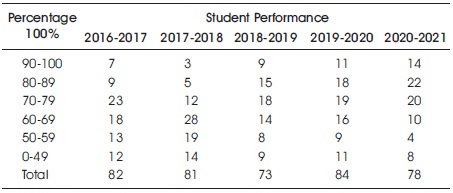
Table 4. Comparison of Student Performance in DIGLAB 2 over a 5-Year Period
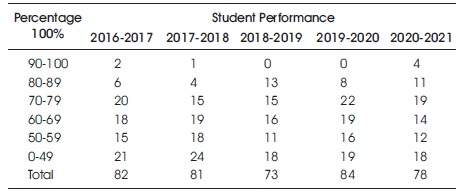
Table 5. Comparison of Student Performance in DIGLAB 3 over a 5-Year Period
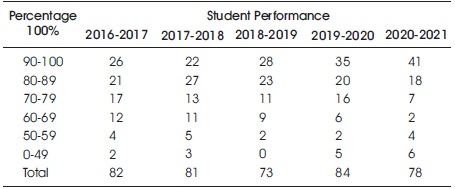
Table 6. Comparison of Student Performance in PCBLAB 1 over a 5-Year Period
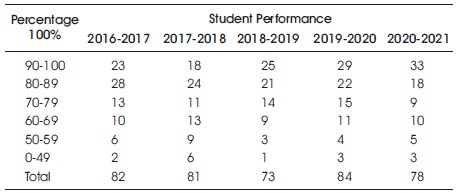
Table 7. Comparison of Student Performance in PCBLAB 2 over a 5-Year Period
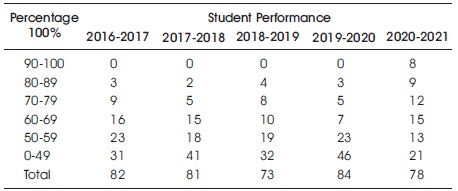
Table 8. Comparison of Student Performance in Design Project Report over a 5-Year Period
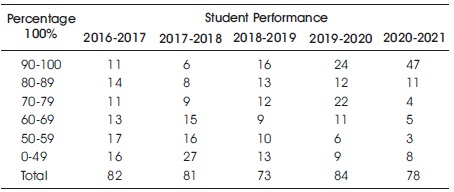
Table 9. Comparison of Student Performance in Design Project Practical Exam over a 5-Year Period
In each academic year from 2016–2017 to 2020–2021, students of the laboratory and project design course were required to complete course feedback questionnaires anonymously. The feedback questionnaires of the past five years were reviewed. Based on the questionnaires for academic years 2016–2017 to 2019–2020, students indicated that the traditional teaching approach prior to COVID-19 restrictions provided them with an academic atmosphere in the form of the university laboratory facility for them to conduct all labs and attempt the design project. Students enrolled in the laboratory and project design course in the academic year 2020-2021 were exposed to teaching at the university level prior to COVID- 19 school restrictions, so they were asked to contrast their experience with this new teaching methodology to what they were accustomed to prior to COVID-19 school restrictions. They also indicated that the abundance of learning resources enhanced the learning process. Students said that the use of Zoom consultations allowed them to effectively meet with the course lecturer outside of course lectures and labs to seek assistance with course material they were having issues understanding. They also appreciated the availability of recordings for all lectures and labs, which allowed them to review the material at their convenience.
The COVID-19 pandemic has significantly impacted the delivery of education, especially for laboratory-intensive courses, with universities implementing remote learning and assessment methods. Despite the challenges posed by these changes, the teaching methodology used did not result in student performance degrading below what is normally expected in previous years. In fact, in some cases, it resulted in an improvement in student performance compared to previous years. Students have endorsed the use of elements of the new teaching methodology, especially the lecturer's ability to deliver all laboratory content using online platforms and support student learning through Zoom consultations. The laboratory and project design course taught is highly practical and requires students to develop digital electronic circuits using hardware description and programmable logic with limited prior experience. This paper demonstrates the merits of incorporating an online version of this course into a distance learning platform.
Adequate access to the internet was crucial for this teaching and assessment methodology. The teaching and assessment strategies utilized in delivering and assessing students for the laboratory and project design course during COVID-19 school restrictions faced no interruptions due to internet connections. Both the course lecturer and enrolled students had adequate access to internet resources, such as My Elearning Course Page, Zoom, and email. However, individuals intending to use these methodologies for conducting future courses must be mindful that these methodologies are not immune to interruptions due to internet connectivity. Inadequate access to the internet for either the course lecturer or students would have been catastrophic to the progress of the course.
A number of lessons were learned from the experience of teaching and assessing this laboratory-intensive course during COVID-19 school restrictions. The first lesson learned was the importance of making consultation opportunities available to students enrolled in laboratoryintensive courses. The laboratory and project design course was a practical course, and in the absence of a physical laborator y facility, a virtual laborator y environment needed to be created using online platforms for the students' benefit. The addition of consultation opportunities appeared to have improved the student experience, as evidenced by their positive feedback. Consultation facilities such as Zoom and email consultations proved to be highlights of the student experience, and the utilization of such opportunities was high.
The second lesson learned was the importance of making recordings of lectures and laboratory exercises available for students. Students who did not understand the material taught in class could make use of office consultations to better comprehend the course material. Additionally, students who were absent from class could access the missed lecture by reviewing the recordings. When recordings are available, the dependency on consultations with the course lecturer is reduced since students can simply rewatch the lectures and laboratory exercises. If students are still unclear on course material after reviewing the recordings, they can proceed to a consultation opportunity.
A third lesson learned was related to the benefits that can be gained by preparing laboratory exercises for the course in such a way that the deliverables are connected to the requirements of the design project. This allowed students to explore aspects of the design project before actually attempting it. As indicated in this paper, the digital electronics laboratory exercises were conducted in the first half of the semester, between weeks two and five of the course. The design project was set to begin in week six and end in week thirteen. Since the deliverables of the labs were connected to the requirements of the design project, which was set to begin after the labs, students were at an advantage when attempting the design project compared to if the laboratory exercises were not based on the specifications of the design project. Students praised this approach and indicated that it was indeed helpful in their attempt at the design project.
If this level two laboratory and project design course were to be taught online again, the first addition would be the smart reintroduction of the practical examination for the design project. Due to the COVID-19 school restrictions, the department's laboratory facility could not be used to conduct practical examinations. As a result, students were required to demonstrate their work through video recordings uploaded to YouTube. This alternative assessment methodology was supported by a demo rubric made available to students. When utilized, the combined facility challenged students to demonstrate their progress in the design project, just like the in-person practical exams in the lab. The only aspect missing from this alternative approach, however, was the presence of an examiner interrogating students on their attempts in such a way that it could be effectively determined that the students fully understood the requirements of the design project. If this laboratory and project design course were to be taught online again, it is recommended that some form of digital examiner be added for the interrogation of students. It may not be wise to make use of human examiners online unless there are adequate human resources to support this idea. Furthermore, scheduling students for such a strategy may be a complicated operation (Demeter & Banský, 2012).
One year after the COVID-19 global health crisis, it can be concluded that education at all levels was affected in the short term. Although the long-term impact remains uncertain, the teaching and assessment strategies implemented in this study have been shown to be both feasible and effective for the level two laboratory and project design course, and could potentially be applied to other laboratory-intensive courses.